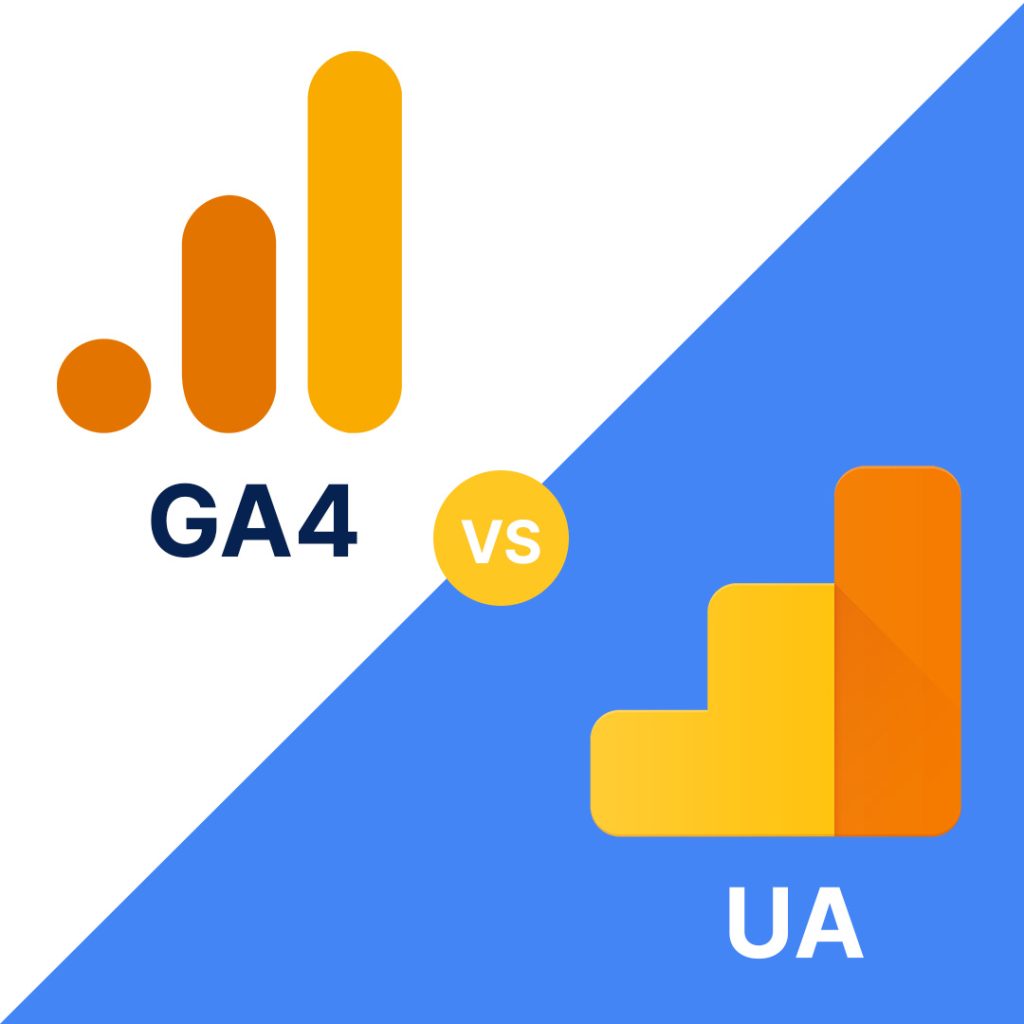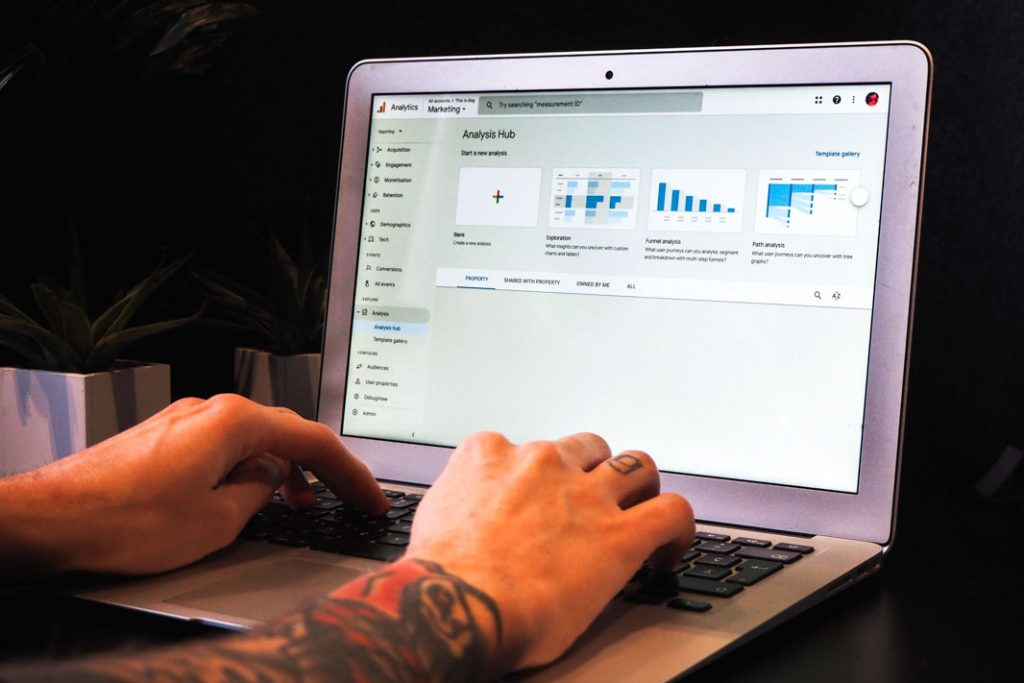Google Analytics 4 (GA4) is often called the next important development in the online world. It promises to help you understand your customers well, showing you what they’re doing on your website as it happens. It even tries to guess what they might do next.
However, nothing is perfect. While GA4 offers many advanced features, there are parts that aren’t as good as they seem. These are the areas that people often don’t talk about or ignore. Whether it’s problems with keeping user information private, making sure the data is correct, or how complicated the tool is to use, it’s important to look at GA4 from all sides.
In this blog, we’ll reveal the less-talked-about challenges and downsides of using GA4. We plan to give you a balanced view so you can decide if it’s the right tool for you.
If you’re considering hiring an agency to assist you with the complexities of GA4, Goodish is here to offer specialized services to guide you through.
Table of Contents
1. Data Complexity: Overwhelming for Small Businesses
2. Privacy Concerns: Data Collection Ethics
3. Learning Curve: Not User-Friendly for Beginners
4. Limited Historical Data: Starting from Scratch
5. Cost Implications: Free, But at What Cost?
6. Feature Gaps: What’s Missing in GA4?
7. Integration Challenges: Not Always a Smooth Ride
8. Ongoing Costs and Challenges in a Post-Mandatory GA4 World
9. Limited Customization: Less Flexibility for Unique Business Needs
10. Conclusion
Data Complexity: Overwhelming for Small Businesses
GA4 offers a wide range of metrics and insights that can be incredibly useful for making informed business decisions. For large companies with dedicated analytics teams, this wealth of information is a big advantage. They have the resources and expertise to sift through the data, analyze it, and turn it into actionable insights.
But for small business owners, having so much data can be more confusing than helpful. If you’re not an expert in analyzing data, you might feel lost with all the numbers and charts. It can be hard to know what they mean or how to use them to make your business better.
In situations like this, GA4’s complexity can become more of a problem than a help. It’s important to find a middle ground where you can use GA4’s features without getting overwhelmed by all the details.
Privacy Concerns: Data Collection Ethics

Privacy is a big deal these days, and GA4’s ability to gather lots of information about users can make some people uneasy. Even though GA4 follows all the rules about privacy, like GDPR, the fact that it can collect so much data from different places can be a bit worrying for regular folks who don’t know how their information is being used.
Because GA4 can track what you do across different websites and even on different devices like your phone or laptop, it gathers a lot of details. For some people, this might feel like someone is watching over their shoulder all the time online.
So, if you’re running a business and using GA4, it’s really important to be open with your customers about what kind of data you’re collecting and why. Let them know how you plan to use this information. Doing this can help build trust and make sure you’re being fair and honest in how you gather and use people’s data.
Learning Curve: Not User-Friendly for Beginners
The new look and features of GA4 can be a bit of a shock, especially if you’re used to the older version, Universal Analytics. There’s a lot to learn. Even if you were a pro at using the old version, you might find yourself feeling like a beginner all over again with GA4. This learning curve isn’t just a small bump in the road; it’s more like a steep hill that you have to climb.
And for those who are completely new to Google Analytics, it can feel even more overwhelming. This can make it hard for people to use GA4 effectively right away, which could be a setback if you’re trying to get immediate insights for your business. simplify the word daunting.
Furthermore, the constant updates and new features being rolled out for GA4 can make it challenging to keep up. Just when you think you’ve got the hang of it, something new comes along that requires additional learning.
This constant change can be both exciting and frustrating, as it offers new possibilities for data analysis but also adds another layer of complexity to an already intricate system.
Limited Historical Data: Starting from Scratch
Switching to GA4 comes with a big catch: you can’t bring your old data with you. If you’ve been using Universal Analytics for years, you’ve likely gathered a lot of valuable information about your customers and how they interact with your website. Unfortunately, when you make the move to GA4, all that historical data stays behind. You’re essentially starting with a blank slate.
This lack of historical data can be a significant setback, especially for businesses that rely on past trends to make future decisions. Whether it’s understanding seasonal buying patterns or tracking the success of past marketing campaigns, losing this data means you’re missing out on a wealth of insights that could help steer your business strategy.
Given this limitation, businesses will need to be proactive in setting up new tracking metrics and goals in GA4 as quickly as possible. The sooner you start collecting new data in GA4, the sooner you’ll be able to make informed decisions based on that data.
Cost Implications: Free, But at What Cost?
GA4 is often seen as a free tool, and technically, it is. But the real cost comes into play when you try to unlock its full potential. The platform’s advanced features are not always straightforward to use, especially for those who aren’t experts in data analytics. This means you might need to invest in training courses or workshops to get your team up to speed, and these can be costly.
For smaller businesses operating on a tight budget, this can pose a significant financial challenge. You might even find yourself in a situation where you need to hire a specialized analytics expert to manage GA4 for you, adding another expense to your budget.
So, while GA4 itself doesn’t have a price tag, making the most of it isn’t necessarily free. It’s essential to factor in these hidden costs when deciding whether or not to fully commit to using GA4 for your business analytics needs.
Feature Gaps: What’s Missing in GA4?
GA4 is often celebrated as the next evolution in web analytics, promising a bunch of new capabilities and insights.
But it’s important to note that while GA4 brings many new features to the table, it also leaves behind some functionalities that were available in Universal Analytics. For businesses that relied on these specific features, the transition to GA4 can feel like a step back in some respects.

Goal Tracking
In Universal Analytics, setting up goal tracking was more straightforward and could be based on URLs, time spent on the site, or pages visited.
GA4 has shifted its focus to event-based tracking, which, while powerful, can be more complex to set up and may require additional time and resources to configure correctly.
Audience Segmentation
Universal Analytics allowed for more granular control over audience definitions, including sequence-based segments.
GA4’s approach to audience segmentation is different and may not offer the same level of detail that some businesses are accustomed to.
Standard Reports
Universal Analytics had a more extensive set of standard reports readily available for users. These reports covered everything from user behavior and acquisition channels to e-commerce tracking.
In GA4, some of these reports are either missing or have been consolidated into broader categories, requiring users to dig deeper to find the specific data they’re looking for.
Custom Dimensions and Metrics
Universal Analytics provided options for custom dimensions and metrics, allowing businesses to customize their analytics setup to their unique needs.
While GA4 does offer some customization, it’s not as extensive as what was available in the older version, potentially limiting the types of analyses you can perform.
Integration Challenges: Not Always a Smooth Ride
One of the less-discussed issues with Google Analytics 4 (GA4) is its potential for integration challenges. While GA4 is designed to be a comprehensive analytics tool, it doesn’t always play well with other platforms or tools that your business might already be using.
For instance, if you’re using a specific Customer Relationship Management (CRM) system or an email marketing platform, you might find that GA4 doesn’t integrate as smoothly as you’d like. This lack of seamless integration could mean you’ll need to invest additional time in setting up these connections manually.
So, while GA4 offers a range of advanced features, it’s essential to consider the potential integration challenges and the additional resources they might require.
If you would like help with this from a team of experts in GA4 you can click here.
Ongoing Costs and Challenges in a Post-Mandatory GA4 World
Since GA4 became mandatory in July 2023, businesses can’t pick between Universal Analytics and GA4 anymore. This has changed the focus from the costs of moving to GA4 to the ongoing issues and costs of using it effectively.
For example, your team might need a lot of training to understand the subtle differences of GA4, especially if they were used to Universal Analytics. This isn’t a one-time deal; as GA4 keeps changing, you’ll need to keep learning to stay up-to-date.
You might also need to hire outside experts to help you make sense of GA4’s complicated features. Whether it’s for setting up detailed tracking or making the data useful for your business, these expert sessions could become a regular cost that wasn’t as common with Universal Analytics.
And let’s not forget the time you’ll spend. Getting used to a new system means spending a lot of time setting up new tags, adjusting settings, and making sure you’re getting the data you need. When you add up this time, it becomes an indirect but real cost for your business.
Limited Customization: Less Flexibility for Unique Business Needs
GA4 comes with a bunch of new features designed to give you a more complete view of customer behavior. However, it’s not as flexible when it comes to customization. If you were using Universal Analytics, you might miss the ability to adjust the platform to meet your specific business needs.
In Universal Analytics, you could create custom dimensions, custom metrics, and even custom reports that could be shaped to fit your unique requirements. These customization options let you look more closely at the data and get insights that were most important to your business.
With GA4, some of these customization features are either limited or missing altogether. This can be a big drawback for businesses that rely on highly customized reporting and data analysis to make informed decisions.
So, while GA4 offers advanced capabilities, it’s essential to consider whether it provides the level of customization that your business needs. If not, you may find yourself looking for other ways to get the data you need or even considering other analytics platforms that offer more flexibility.
Conclusion
As we’ve explored in this blog, Google Analytics 4 (GA4) is a double-edged sword. While it brings a lot of new features to the table, it also comes with its own set of challenges that could make your analytics journey more omplicated than you anticipated. From data issues that could confuse small business owners to ethical concerns about data collection, GA4 isn’t a one-size-fits-all solution.
The requirement to use GA4 has also added new ongoing costs and challenges. Whether it’s the need for ongoing training or the possibility of hiring outside experts, businesses need to be ready for a different kind of investment.
In summary, while GA4 offers exciting opportunities for data analytics, it’s important to approach it with a balanced view. Evaluate your specific needs, what you’re capable of, and the resources you’re willing to use to get the most out of GA4.
We at Goodish agency are experts in digital marketing and we can help you to utilize AI to reduce your costs and boost your performance. Read more about our services.











